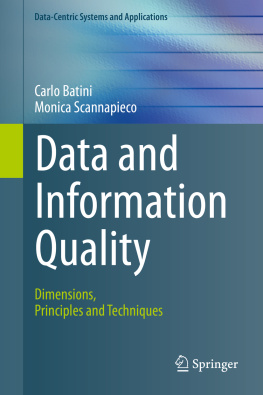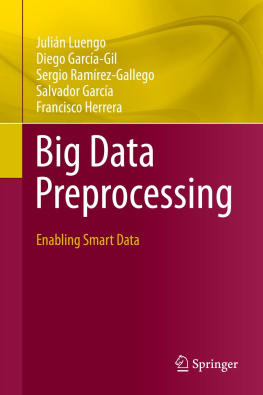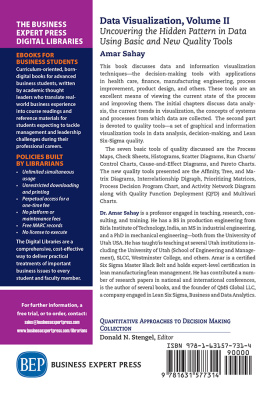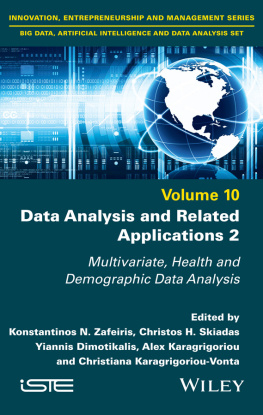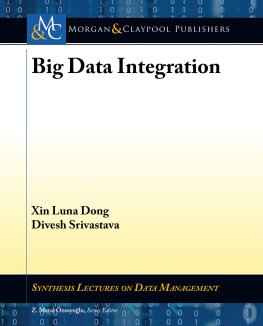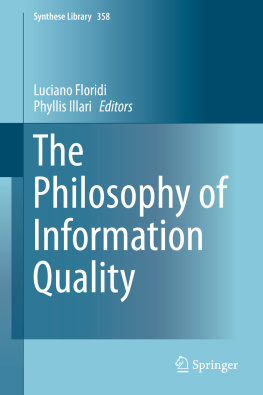1.2 Why Information Quality Is Relevant
The consequences of poor quality of information can be experienced in everyday life but, often, without making explicit connections to their causes. Some examples are: the late or mistaken delivery of a letter is often blamed on a dysfunctional postal service, although a closer look often reveals data-related causes, typically an error in the address, which can be traced back to the originating database. Similarly, the duplicate delivery of automatically generated mails is often indicative of a database record duplication error.
Information quality seriously impacts on the efficiency and effectiveness of organizations and businesses. The report on information quality of the Data Warehousing Institute (see []) estimates that IQ problems cost US businesses more than 600 billion dollars a year. The findings of the report were based on interviews with industry experts, leading-edge customers, and survey data from 647 respondents. In the following, we list further examples of the importance of IQ in organizational processes:
Customer matching . Information systems of public and private organizations can be seen as the result of a set of scarcely controlled and independent activities producing several databases very often characterized by overlapping information. In private organizations, such as marketing firms or banks, it is not surprising to have several (sometimes dozens!) customer registries, updated by different organizational procedures, resulting in inconsistent, duplicate information. Some examples are: it is very difficult for banks to provide clients with a unique list of all their accounts and funds.
Corporate householding . Many organizations establish separate relationships with single members of households or, more generally, related groups of people; either way, they like, for marketing purposes, to reconstruct the household relationships in order to carry out more effective marketing strategies. This problem is even more complex than the previous one, since in that case, the information to match concerned the same person, while in this case, it concerns groups of persons corresponding to the same household. For a detailed discussion on the relationship between corporate householding information and various business application areas, see [].
Organization fusion . When different organizations (or different units of an organization) merge, it is necessary to integrate their legacy information systems. Such integration requires compatibility and interoperability at any layer of the information system, with the database level required to ensure both physical and semantic interoperability.
The examples above are indicative of the growing need to integrate information across completely different data sources, an activity in which poor quality hampers integration efforts. Awareness of the importance of improving the quality of information is increasing in many contexts. In the following, we summarize some of the major initiatives in both the private and public domains.
1.2.1 Private Initiatives
In the private sector, on the one hand, application providers and systems integrators and, on the other hand, direct users are experiencing the role of IQ in their own business processes.
With regard to application providers and systems integrators, IBMs (2005) acquisition of Ascential Software , a leading provider of data integration tools, highlights the critical role data and information stewardship plays in the enterprise. The 2005 Ascential report [] on data integration provides a survey that indicates information quality and security issues as the leading inhibitors (55% of respondents in a multi-response survey) to successful data integration projects. The respondents also emphasize that information quality is more than just a technological issue. It requires senior management to treat information as a corporate asset and to realize that the value of this asset depends on its quality.
In a research by the Economist Intelligence Unit [] in 2012 on managers perception of the most problematic issues in the management of Big Data, access the right data (a kind of data quality dimension related to relevance of data) ranks first, while accuracy, heterogeneity reconciliation, and timeliness of data rank, respectively, second, third, and fourth.
The awareness of the relevance of information quality issues has led Oracle (see []) to enhance its suite of products and services to support an architecture that optimizes information quality, providing a framework for the systematic analysis of information, with the goals of increasing the value of information, easing the burden of data migration, and decreasing the risks inherent in data integration.
With regard to users, Basel2 and Basel3 are international initiatives in the financial domain that require financial services companies to have a risk-sensitive framework for the assessment of regulatory capital. Initially published in June 2004, Basel2 introduced regulatory requirements leading to demanding improvements in information quality. For example, the Draft Supervisory Guidance on Internal Ratings-Based Systems for Corporate Credit states (see []): institutions using the Internal Ratings-Based approach for regulatory capital purposes will need advanced data management practices to produce credible and reliable risk estimates and data retained by the bank will be essential for regulatory risk-based capital calculations and public reporting. These uses underscore the need for a well defined data maintenance framework and strong controls over data integrity.
Basel3, which was agreed upon by the members of the Basel Committee on Banking Supervision in 2010, proposes further policies for financial services companies (see [], and the Business Process Modeling Notation is used to represent bank business processes, to identify where information elements enter the process, and to trace the various information outputs of processes.
1.2.2 Public Initiatives
In the public sector, a number of initiatives address information quality issues at international and national levels. We focus in the rest of the section on two of the main initiatives, the Data Quality Act in the United States and the European directive on reuse of public information.
In 2001, the President of the United States signed into law important new Data Quality legislation, concerning Guidelines for Ensuring and Maximizing the Quality, Objectivity , Utility , and Integrity of Information Disseminated by Federal Agencies, in short, the Data Quality Act . The Office of Management and Budget (OMB) issued guidelines referred for policies and procedures on information quality issues (see []). Obligations mentioned in the guidelines concern agencies, which are to report periodically to the OMB regarding the number and nature of information quality complaints received and how such complaints were handled. The OMB must also include a mechanism through which the public can petition agencies to correct information that does not meet the OMB standard. In the OMB guidelines, information quality is defined as an encompassing term comprising utility, objectivity, and integrity. Objectivity is a measure to determine whether the disseminated information is accurate, reliable, and unbiased and whether that information is presented in an accurate, clear, complete, and unbiased manner. Utility refers to the usefulness of the information for its anticipated purpose by its intended audience. The OMB is committed to disseminating reliable and useful information. Integrity refers to the security of information, namely, protection of the information from unauthorized, unanticipated, or unintentional modification, to prevent it from being compromised by corruption or falsification. Specific risk-based, cost-effective policies are defined for assuring integrity.

